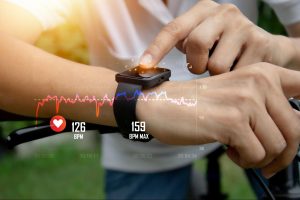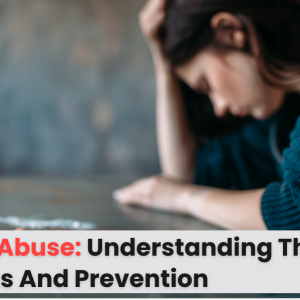
Gym Safety Tips That Could Save Your Life During Intense Workouts
Regular exercise is essential for maintaining a healthy heart, but intense workouts can pose risks if not performed safely. For individuals with underlying heart conditions, the danger increases, making gym safety a critical focus. By following the right precautions, you can enjoy the benefits of exercise while minimizing the risk of heart attacks.
Whether you’re a beginner or a seasoned athlete, this guide offers practical steps to keep your heart healthy during intense workouts.
1. Know Your Heart Health
Understanding your heart’s condition is the first step toward safe workouts.
Steps to Take:
- Consult a doctor: If you’re over 40 or have a family history of heart disease, schedule a medical check-up, including stress tests and cholesterol screenings.
- Monitor blood pressure: High blood pressure strains the heart. Regular checks can help you manage this risk.
- Track cholesterol levels: Elevated cholesterol contributes to artery blockages, raising heart attack risks. Work with your doctor to maintain healthy levels.
2. Warm Up Properly
Skipping a warm-up can shock your heart, increasing the risk of cardiovascular strain.
Warm-Up Tips:
- Light cardio: Begin with 5-10 minutes of brisk walking or slow cycling to elevate your heart rate gradually.
- Dynamic stretches: Perform arm circles, leg swings, and hip rotations to loosen muscles and joints.
- Progressive intensity: Gradually increase workout intensity to prepare your body.
3. Stay Hydrated

Dehydration stresses your heart, particularly during intense exercises.
Hydration Tips:
- Drink water: Aim for 8-10 glasses daily and hydrate before, during, and after workouts.
Monitor hydration levels: Check for dark-colored urine or dizziness as signs of dehydration. - Electrolyte drinks: Use them for workouts lasting over an hour to replace lost minerals and support heart function.
4. Practice Proper Breathing Techniques
Holding your breath during exercises can spike blood pressure and reduce oxygen flow to your heart.
Breathing Tips:
- Inhale and exhale correctly: For weightlifting, inhale before lifting and exhale during the effort.
- Avoid the Valsalva maneuver: Don’t hold your breath during heavy lifts.
- Focus on deep breathing: Slow, controlled breaths help stabilize your heart rate.
5. Recognize Warning Signs

Ignoring warning signs can lead to severe complications. Knowing when to stop is vital.
Symptoms to Watch For:
- Chest pain or discomfort
- Sudden shortness of breath
- Dizziness or lightheadedness
- Nausea or cold sweat
If you experience any of these, stop exercising immediately and seek medical attention.
6. Pace Yourself
Overexertion can overwhelm your cardiovascular system. Gradual progression ensures safety.
Pacing Tips:
- Follow the 10% rule: Increase workout intensity or duration by no more than 10% per week.
- Alternate intensity: Incorporate rest periods in high-intensity interval training (HIIT).
- Listen to your body: Rest if you feel overly fatigued or weak.
7. Cool Down After Workouts
Cooling down helps your heart transition to its resting state.
Cool-Down Tips:
- Light cardio: Spend 5-10 minutes walking or cycling post-workout.
- Static stretches: Stretch the muscles you worked on to improve circulation and flexibility.
8. Use a Heart Rate Monitor

Heart rate monitors can help you exercise within a safe range.
Usage Tips:
- Target zones: Stay within 70-85% of your maximum heart rate (calculated as 220 minus your age).
- Rest when needed: Slow down if your heart rate exceeds the safe range.
9. Strengthen Your Heart Over Time
Building cardiovascular fitness gradually reduces risks.
Tips for Progression:
- Start slow: Begin with moderate activities like walking or swimming.
- Consistency over intensity: Focus on regular, moderate workouts rather than sporadic intense sessions.
- Incorporate rest days: Allow your heart and body time to recover.
FAQs on Gym Safety and Heart Health
Q1: How can I determine if my heart is healthy enough for intense workouts?
A: Consult your doctor for a full medical check-up, including stress tests and cholesterol screenings, especially if you’re over 40 or have a family history of heart disease.
Q2: What is the best way to warm up for intense workouts?
A: Start with 5-10 minutes of light cardio and dynamic stretches to gradually increase your heart rate and loosen your muscles.
Q3: How do I know if I’m dehydrated during a workout?
A: Symptoms of dehydration include dark-colored urine, dizziness, and excessive fatigue. Keep water or electrolyte drinks handy.
Q4: Are heart rate monitors necessary for gym safety?
A: While not mandatory, heart rate monitors help ensure you’re exercising within a safe range, reducing the risk of overexertion.
Q5: What should I do if I feel chest pain during a workout?
A: Stop exercising immediately, rest, and seek medical attention if the pain persists.
Summary
Exercise is a cornerstone of heart health, but safety must come first. By monitoring your heart health, pacing yourself, staying hydrated, and being mindful of warning signs, you can significantly reduce the risk of heart attacks during intense workouts. Prioritize gym safety and enjoy the long-term benefits of a healthy and active lifestyle.





